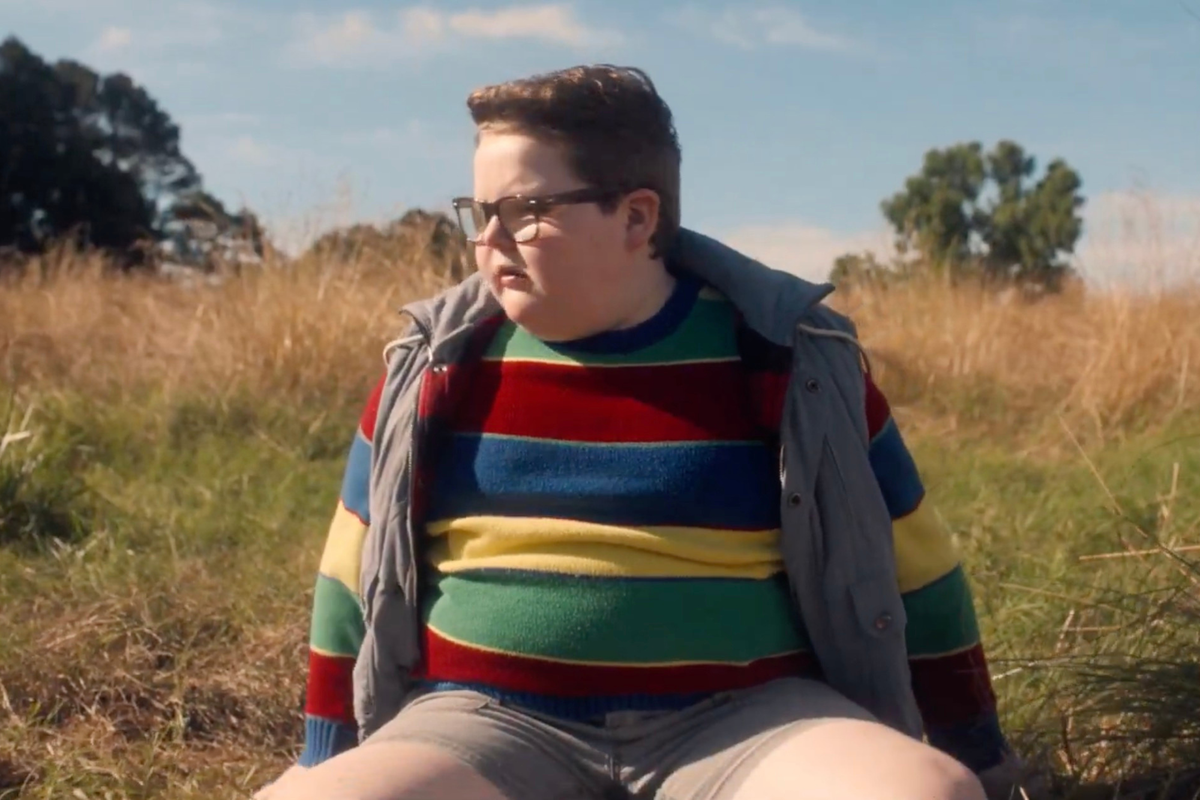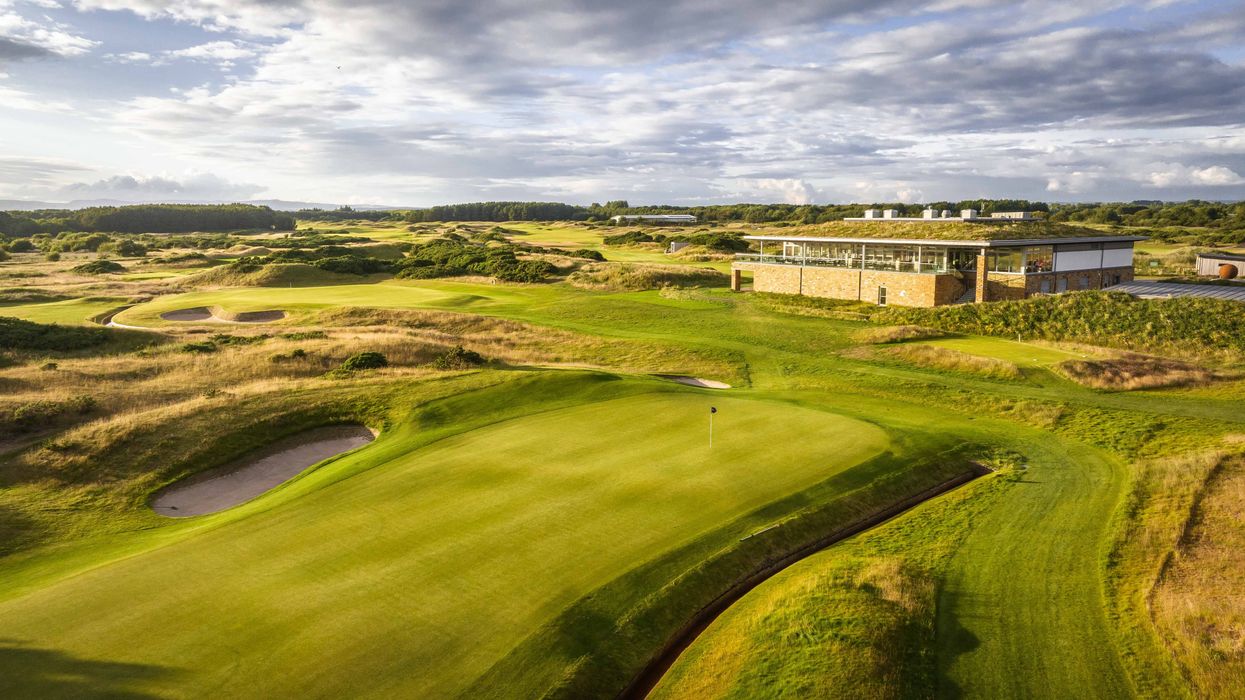
I’m looking out at a glorious sunset from the dining room at Royal Troon, standing next to the actual Claret Jug, with a sneaking suspicion that I shouldn’t really be here.
I’ve been playing for less than two years. In that time I’ve played some of the worst golf imaginable and loved every minute of it, before eventually wrestling myself down to an unspectacular but semi-respectable standard. In the space of the last two days, I’ve ended up playing the superb Dundonald Links and Royal Troon: hallowed ground on Scotland’s beautiful west coast, which will play host to the 152nd Open championship in 2024.
In that relatively short time, I’ve realised that one of the wonders of this sport is being able to play the same courses as the best players in the world, stepping up and (very, very occasionally) hitting shots they’d be pleased to have hit themselves. The fact that I was able to spend a few days in one of the most exceptional locations for golf anywhere on the planet and relish every moment, is a testament to that.
The Open Championship is named so because theoretically any player can enter qualifying and try to take part. It’s surreal to even be standing here, with golf’s biggest prize just feet away, but not only does this part of Scotland offer some of the best experiences anywhere in the UK for lovers of the game, but it also proves that golf really is for everyone.
Sign up to our free Indy100 weekly newsletter
My main destination for an unforgettable week in golf country is Dundonald Links. While there has been golf played on the site since 1911, the course that opened in 2003 was designed by Kyle Phillips, who is also responsible for celebrated courses like Kingsbarns and The Grove. It’s a beautiful modern links which despite hosting the Scottish Open in 2017 and always being held in high regard as a course, was previously held back by a lack of a major clubhouse.
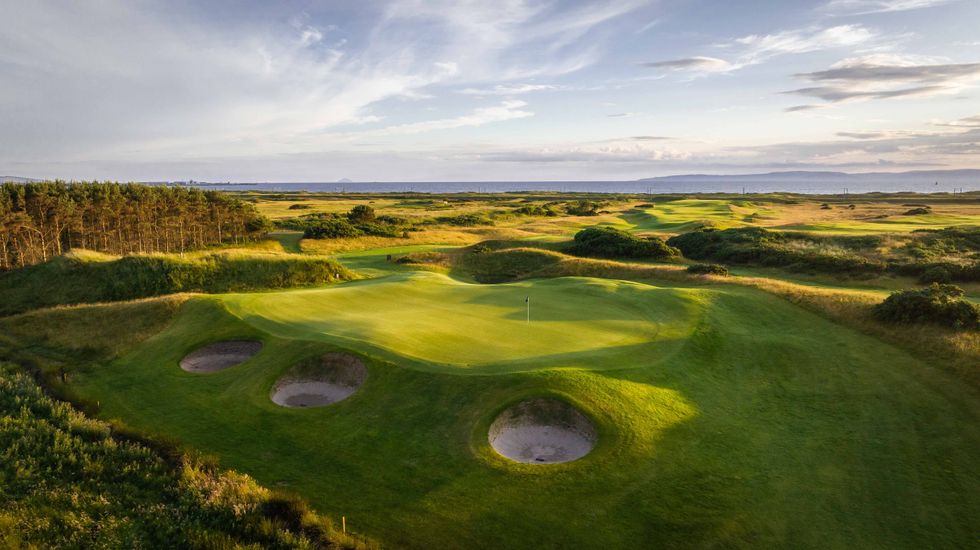
That changed with a major redevelopment in 2021, which saw new owners Darwin Escapes invest £25 million into the place. The result is an assortment of world-class facilities all within an 9-iron's distance of the first tee.
While the Scottish Open had been hosted with a series of temporary structures, the new clubhouse is a fantastic focal point and one of the finest contemporary golfing constructions you will find anywhere in the UK. The slick, spacious room on the first floor is split between the central bar and the Canny Crow restaurant, which offers contemporary British dining done superbly well. There’s also an excellent pro shop and a state-of-the-art gym, as well as saunas and steam rooms in both sets of changing rooms, a grass range and short game areas.
Then, there’s the course itself. I had the pleasure of playing it twice during my stay. The first thing that you notice when walking to the first tee box is the flashes of yellow and purple gorse, which frame holes and add both character and danger along all the undulating Dundonald fairways. The run of holes cut channels through natural burrows and hillocks of the land, with penal rough ready to snag errant shots. Dundonald is lusher and more tree-lined than your traditional links, and while burnt-out fairways and bare lies are the norm along the Scottish coast, the fairways here are left a little longer through selective irrigation methods. The greens were in excellent condition and played fast and true during both rounds, offering a little more reception than your typical links playing surfaces.
The western corner of the course looks out to the Isle of Arran and Ailsa Craig across the Irish Sea. It’s a reminder of the wealth of great courses on this stretch of coastline too, with Turnberry round the corner, as well as Western Gailes and Royal Troon just out of sight.
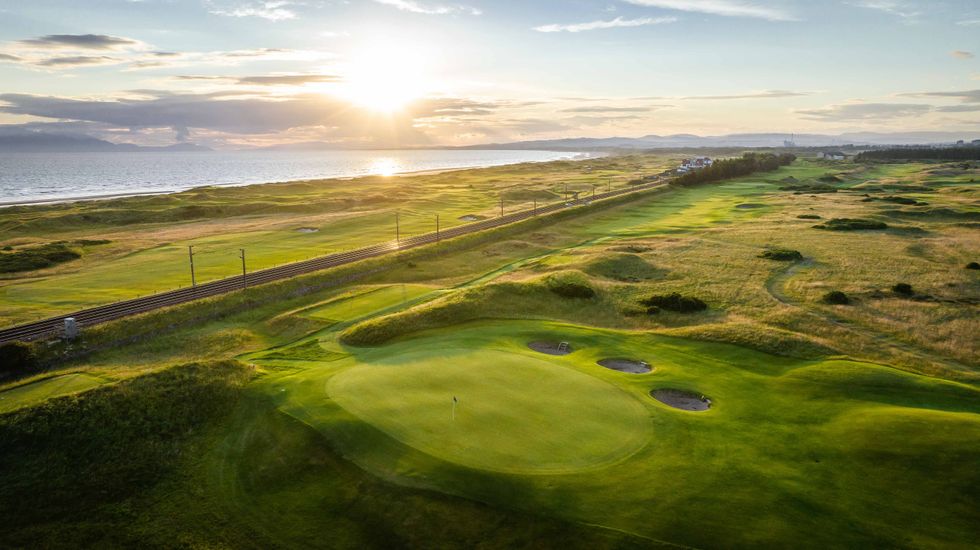
While the first nine certainly isn’t lacking in appeal, the standout holes are more prevalent on the back. The 11th hole is a memorable par three measuring just 123 yards from the back tees, which can really show its teeth if not played smartly. The three sand traps on the front look nasty enough, but don’t be too tempted to take too much extra club: the deepest bunker I’ve ever seen, officially known as the “Cauldron” and colloquially referred to as the “Devil’s a***hole”, is waiting over the back and requires players to hit 10ft up to the green, up a slope which feeds balls back down to the sandy depths. Do not, under any circumstances, go in there, because you might never get out.
Aside from this one feature, the course plays true and fair, offering a challenge to all levels of golfer, and offering plenty in terms of enjoyment for the mid to higher handicapper. Moreover, it’s a gorgeous plot of land. The 13th hole is skirted by a train and runs down to a huge McKenzie-style green, with a burn running across the front ready to catch under-hit approaches. With the rail track tucking up the left-hand side, this beautiful hole leaves you feeling like you’re a bad pull away from derailing the Glasgow Express.
The 18th might be the best of the lot. The wide green has another treacherous burn snaking across before it - something of a signature at Dundonald – helping to provide a stunning risk and reward closing hole. There’s a plaque on the fairway marking the spot from which Rafa Cabera Bello hit a wand of a three wood from 275 yards to 10 feet to win the Scottish Open in 2017. It’s bound to provide more drama when the course hosts the Scottish Women’s Open again later this year.
After my first-time round, seeing players finish up on the 18th green from the clubhouse in the golden hour, it just made me want to jump back in a buggy and play again.
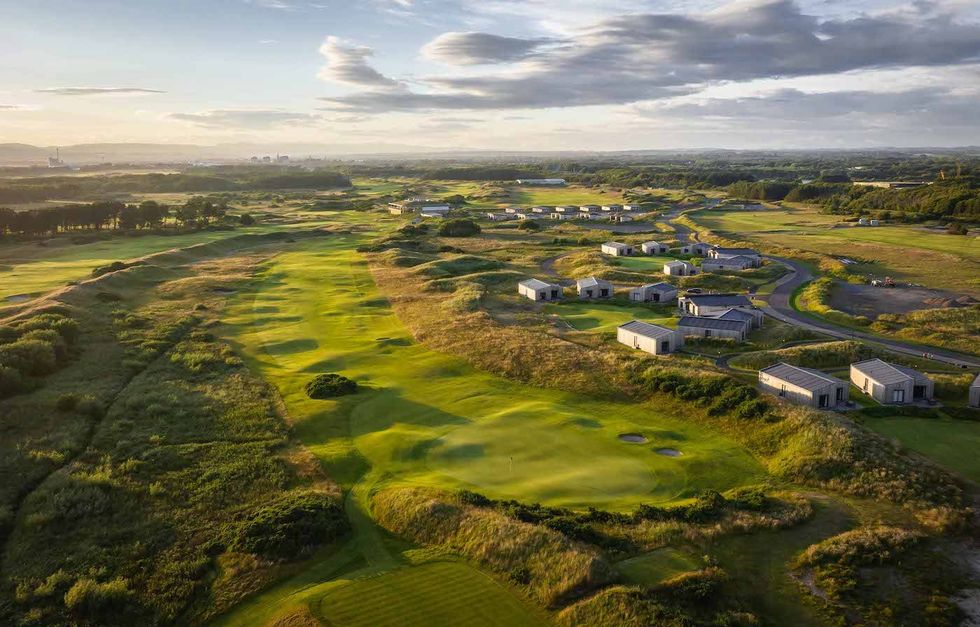
Royal Troon would come later in the week, but while that 19th century institution is rightly proud of its tradition and reverence for rules and respect, Dundonald, just a 10 minute drive away on the same stretch of coast, could hardly be more different. The smart, yet laid-back setting in the Canny Crow restaurant is one of the strongest elements of Dundonald’s overall offering. I enjoyed excellent vegetarian options (not always the case in Scotland) and a strong wine list during my time there. There’s also a superb whisky room kitted out with a custom Dundonald Links 1980 Bunnahabhain Canasta cask – the only one in the world. For whisky fans on a golf trip, it’s essentially heaven on Earth.
A total of 18 new lodges were put in place in 2021, offering luxurious rooms, large communal spaces complete with spacious kitchens, pool tables and large sofas – ideal for sinking into and watching the PGA Championship on our penultimate night of the stay. The biggest talking point of the lodges are the three purpose-built putting greens also designed by Phillips which border them, all in great condition. Things have stepped up a whole lot at Dundonald in the last few years with the new developments. Their aim was to create one of the best golf resorts in Scotland, and provide a hub for players exploring Ayrshire. Over the course of my stay, it was apparent they had achieved this in some style.
The next day, there was the small matter of playing Royal Troon.
The historic course was the venue for one of the most memorable Open Championships of the 21st century when Henrick Stensen and Phil Mickelsen went toe to toe in 2016. Organisers, the R&A will undoubtedly be hoping for something just as blockbusting when the tournament comes next year. The course is renowned for its difficulty and for being one of the hardest on the Open rota, and so it proved: even on a still day in pretty perfect conditions, I received a bit of a battering at its hands. It is without a doubt the most complete test of golf many in my group had ever – or will ever – experience.

Arriving at the grand old clubhouse steeped in the weight of history and sporting tradition was nerve-inducing enough as it was, but our group had the honour of teeing off next to the Claret Jug on the first tee box. Seeing the famous trophy did little to ease our anxieties ahead of the most significant first tee shot of our lives to start the round. As first tee shots go, it’s a tough one: there’s a myriad of bunkers to navigate ahead, and if you feel like bailing out left to avoid the Irish Sea to your right, there’s always the shin-high rough waiting to swallow up your ball. It was a little taster of the nerves the best players in the world will feel when they stand on the tee for the Open in 2024.
I quickly learned that you cannot go in the rough at Royal Troon, and you absolutely cannot, under any circumstances, go in the sand. There are 98 bunkers on the course, averaging at more than five per hole, and nearly all of them are capable of swallowing up your ball, slapping you in the face and ruining your round.
Whereas Dundonald offers a modern interpretation of links with more grass on the fairways, conditions at Troon are as traditional as you will ever play. It’s a traditional out and back course, with some of the most dramatic coastal vistas you’re likely to experience in the UK. Indeed, the view from the seventh tee box is one of the most breathtaking in Scottish golf, with the sea behind and the fairway peppered with pot bunkers curving down before you. The famous eighth is elevated on the right from there, and if that baby fade turns into a slice, then players on that green could be at risk if you’re not careful.
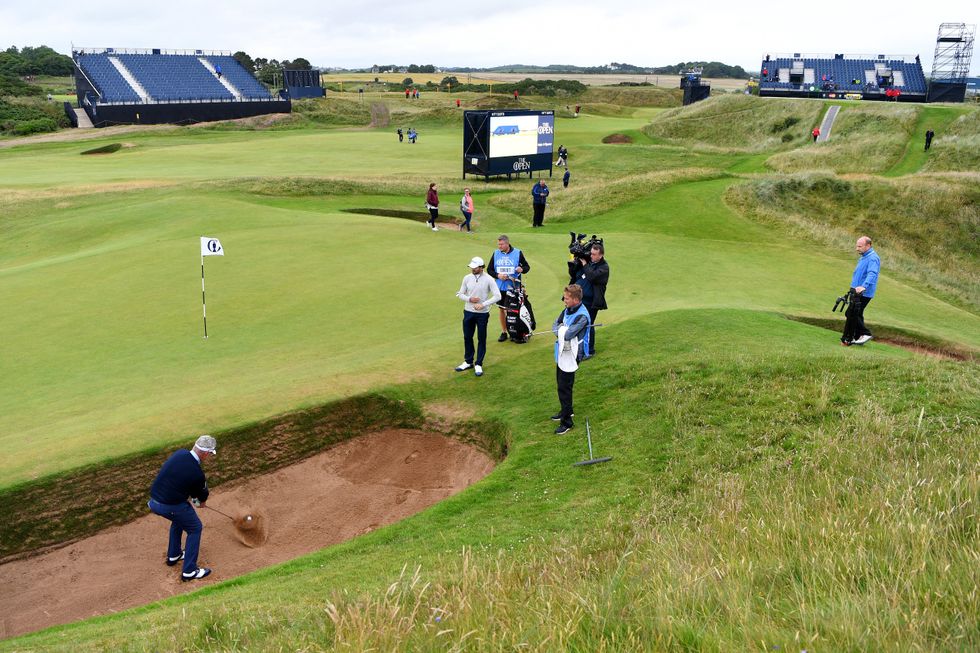
Stood on the tee box of the “Postage Stamp” gives another nerve-inducing jolt. Much has been made of this devilish little hole, just 123 yards in length but with a tiny green perilously plonked in the middle of five enormous bunkers. Avoiding the “coffin” bunker to the left felt like a small victory in itself when my time on the tee box came: considering the golfing lives it has claimed down the years, I was reasonably happy with marking a six on my scorecard.
It’s a course stacked with standout holes, but the 11th – known as “The Railway” as it runs up next to the train tracks – will live long in my memory as one of the most stunningly designed holes I’ll ever play, with a dividing wall just feet from the green on the right and a beast of a bunker ready to catch cautious approaches on the front left. As ever, there’s gorse at every turn and delightful views back over the course from the tee box. It’s technically the hardest on the course, and once again I was already looking forward to seeing the pros take it on. The anticipation of next year’s Open brought home just how lucky I was to have teed it up on such revered turf. By rights I shouldn’t have been there, but I’m so glad I was, and it was another reminder that everyone can have fantastic experiences in golf.
The east coast of Scotland might steal the headlines when it comes to golfing destinations, and it’s no great surprise when the likes of St Andrews, Muirfield, Carnoustie and other wonderful, historic locations can be found there. But the west coast is stacked with world-class destinations for golfers looking to find rewarding experiences, fantastic hospitality and some of the finest links courses anywhere on Earth.
On the last morning of my trip, after the formalities of Troon and a suited and booted R&A dinner the evening before, we took out a buggy on the delightful back nine at Dundonald. It was a serene morning, and we played it in a carefree hour and a half, not bothering about the score and just taking in our surroundings one last time before heading home. It’s an honour to have spent a perfect week in golf country.
Have your say in our news democracy. Click the upvote icon at the top of the page to help raise this article through the indy100 rankings.













